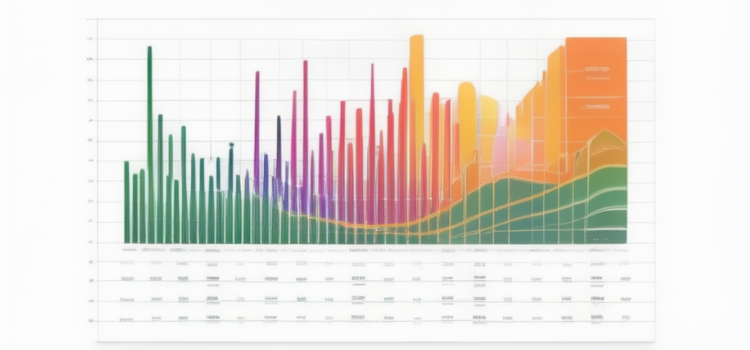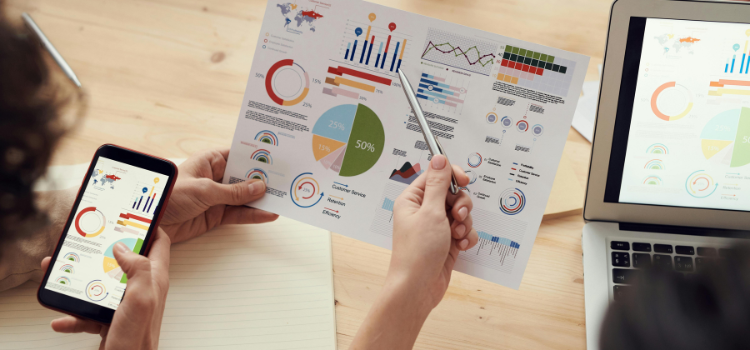In a world that’s saturated with data, choosing the right data visualisation tools for your organisation is crucial. It's about more than just presenting data; it's about telling a story, engaging audiences and making complex information accessible.
In today’s post, we will discuss the importance of leveraging advanced data visualisation tools to enhance your decision-making processes, improve communication and ultimately drive better business outcomes. We'll explore the key factors that can help you navigate the crowded marketplace of data visualisation solutions, ensuring you select a tool that aligns with your strategic objectives, whether you want to communicate abstract new data insights, identify innovative approaches or understand complex data sets with greater clarity.
What Are Data Visualisation Tools?
Data visualisation tools are sophisticated software solutions designed to transform raw data into graphical or pictorial formats, making it easier for users to understand and act upon complex information. These tools play a crucial role in a variety of settings, enabling analysts, marketers, executives, and other stakeholders to quickly identify trends, patterns and anomalies within vast datasets. By facilitating a more intuitive understanding of information, data visualisation tools empower organisations to make informed decisions, communicate insights more effectively, and uncover hidden opportunities.
However, modern data visualisation goes beyond simple charts and graphs; it encompasses the use of interactive elements, real-time updates and customisable dashboards that integrate data from multiple sources. This evolution reflects a broader shift towards more dynamic and engaging ways of presenting data, moving away from static reports to interactive visual narratives that can convey complex information in an accessible and compelling manner.
5 Key Factors to Consider When Looking for a Data Visualisation Tool
So, which data visualisation tool is right for your business? What do you need to consider when you look for a solution?
Ultimately, it comes down to understanding your organisation's unique needs and requirements and whether the features of a solution can meet these needs.
Here are five essential factors to consider:
1. Integration Capabilities
In an era where data comes from a multitude of sources, a tool's ability to integrate with existing software and data sources is paramount. Organisations need a solution that seamlessly pulls data from various platforms, be it CRM systems, marketing tools or proprietary databases. The best data visualisation tools are those that can effortlessly connect to these varied sources, aggregating and synthesising data into a coherent, unified view. This integration is crucial for organisations aiming to craft powerful narratives or delve into complex data analyses. It ensures that insights are derived from a comprehensive data set, providing a more accurate and holistic understanding of business performance, customer behaviour and market trends.

2. User Experience and Accessibility
The effectiveness of a data visualisation tool is significantly influenced by its user experience (UX) and accessibility. Tools designed with an intuitive interface allow users across different skill levels to generate, customise and interpret data visualisations with minimal training. This inclusivity ensures that the tool can be leveraged by a wider audience within the organisation, from data scientists to marketing professionals, reducing silos and enhancing collaboration and data-driven decision-making across departments. Accessibility also extends to the tool's compatibility with various devices and platforms, ensuring that stakeholders can access critical data insights anytime, anywhere.

Look for a tool that prioritises the user experience and accessibility and that empowers you to democratise your data, facilitating a culture of informed decision-making and enabling team members to extract and communicate insights more effectively.
3. Customisation and Flexibility
The ability to customise and adapt data visualisations to meet specific requirements is a critical feature of an effective tool. Customisation allows users to tailor the presentation of data to align with organisational branding, highlight key information or address specific audience needs. This flexibility is invaluable for organisations looking to stand out in their communication strategies, engage audiences with innovative visual content or dissect complex data sets in a manner that is accessible to various stakeholders. Ultimately, a tool that offers a wide range of customisation options, from visual styles to data filters, enables users to create visualisations that are not only informative but also compelling and memorable.

4. Scalability
As organisations grow, their data visualisation needs evolve. A scalable data visualisation tool can accommodate growing data volumes, increasing user numbers and more complex queries without degrading performance. Scalability ensures that the tool remains effective and efficient as the organisation expands, avoiding the need for frequent software changes or upgrades. This capability is essential for maintaining continuity in data analysis practices and ensuring that insights remain timely and relevant.

5. Cost-effectiveness
Finally, the cost of a data visualisation tool must align with your organisation's budget and the value it delivers. The ideal tool provides a balance between features, performance and price, offering value that justifies its cost. Organisations must assess not only the initial purchase price but also ongoing expenses such as subscription fees, maintenance costs and potential charges for additional features or users. However, keep in mind that a cost-effective data visualisation tool doesn't necessarily mean the cheapest option - it’s about finding a solution that delivers a return on your investment through enhanced insights, improved decision-making and greater efficiency.

So, What’s the Bottom Line?
Selecting the right data visualisation tool is a strategic decision that impacts an organisation's ability to communicate effectively, engage with its audience and understand complex data. By considering all the factors we have discussed in today’s post, organisations can identify a tool that not only meets their current needs but also supports their future growth. In doing so, they can transform abstract data into powerful, engaging and easily understandable narratives that drive decision-making and foster success.
Get in touch today to find out how Bestiario can help you design a unique, branded data visualisation tool that enables your business to not just present data but to tell a story that resonates deeply with your audience, aligns with your brand identity and propels you on the path to innovation and success.
Tags:
Data visualization
April 12, 2024

